One of the great wine estates of Martinborough – Palliser, are embarking on conversion to organic farming, and fairly recent import to the business, Guy McMaster, is helping this famous label through that process – overseeing the viticulture and winemaking. I’m keen to meet up with him on-site during a recent flying visit to the town.
WineFolio: I’ve been down to Central recently as well – and obviously from a tourism side of things they have Queenstown and some remarkable (literally) mountains to add to the mix there; but can you tell me in your own words, what you think makes Martinborough Pinot special?
Guy McMaster: Our cold wet weather comes up from the Antarctic, sweeps up the South Island slamming into the Kaikoura Ranges which sit towards the top of the South Island. The significance of these ranges is twofold firstly, Marlborough which sits in behind them are protected secondly, as we are an open valley to the south this cold wet weather comes directly into our region. This affects our flowering, making it unsettled and often brings about low yields – when you compare us to Marlborough. Sauvignon Blanc down there can be 20 tonnes a hectare and we’re closer to ten. Also, about half the yield for Pinot Noir too. This creates difference in flavours. Also, particularly in Pinot Noir, the bunch architecture can get quite loose allowing good sunlight penetration to all the berries.
After the southerlies we get a strong drying northerly wind which can often gust over 100km per hour. We feel the cell walls of the berries are thickening in response to this wind giving us elevated tannin levels. Some analysis was done – Pinot Noir wine from Central Otago, 180 milligrams per litre of tannin, Marlborough 120 milligrams per litre, and on assessing two wines – from Palliser and Martinborough vineyards – found between 220 and 240 milligrams per litre of tannin. A sample from Burgundy indicated 220 milligrams per litre. The main difference between us and Central Otago – both stylistically fantastic versions of Pinot Noir – Central Otago’s summer is shorter, with cooler nights, retaining good levels of acidity. As a result, their Pinot Noirs tend to be built more on a structure of acid. Whenever you put fruit and acid together, the fruit is very plush. So bright, fruit-forward Pinots.
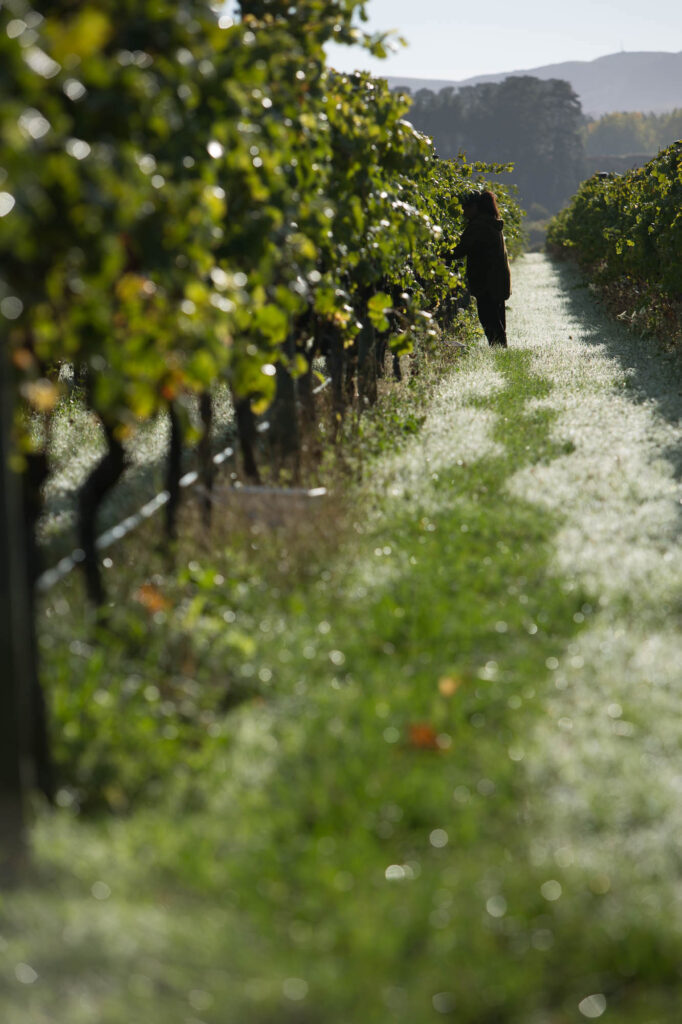
Our summers are longer, and we get our tannins very ripe, so ours are built on a structure of tannin – hence tend to be more savoury. So stylistically you get wonderful fruit expression from Central, and from us you get more savoury-driven styles of Pinot.
When you look at a map of the region you can see the Martinborough Terrace as it wraps around the township. As you drive from Wellington and across the bridge you come to the front of the terrace. The front edge is about 12 metres of river gravel with about 30cms of silt over the top. When you get to the midway point of the terrace, the river gravels here are about twenty metres deep, and then right at the back of the terrace they’re about forty metres deep, both with a similar level of topsoil, wind-blown loess – about 30cms. If you come away from there there’s a church that sits on a ridge, and there’s clay there and that’s really the ‘Golden Mile’. The clay adds a bit of texture to the wine.
I came here from a little place called Urlar – I joined them after leaving Escarpment in 2007. One of my great drivers is organics, and I joined Angus who was the owner of Urlar and took them down the organic path. In 2015 Pip from Palliser approached me when she took over the reins and asked if I’d be interested in taking Palliser into organics. We have three vineyards certified and the aim over the next three years is to bring the rest into it too. We’re hoping that by the end of 2025 to have 100% organic conversion.
I think if you’re going to produce wines that have a sense of place, that really give integrity to the land, you need to be organic. It’s all about the life under your feet. And if you can really look after the bacteria and fungi that’s sitting in your soil, then you’re going to get a truer expression of site. We put quite a lot of molasses, humates, compost and seaweed onto the vineyards to feed the microbial life. After a big southerly storm, we head down to the coast and collect seaweed. We dry it out and chip it into small pieces and put it into fermenters to make a liquid compost that we then spray onto the vines and soil every two weeks.
From the winemaking side, it’s very much hands-off, just guiding it through. A lot of natural ferments. I suppose the exciting thing at Palliser – having got my mitts onto the winemaking in 2019, is that the Pip and the board have been very supportive in allowing us to purchase smaller fermenters that match parcels of vines and soils to try and realise the potential of our vineyard sites.
A case in point – the Wharekauhau Vineyard has a ridge that runs through it with an elevation of a metre. And although the rows run right through, there’s a difference in ripeness between the bottom terrace and the top terrace. Now we have smaller fermenters I can pick each clone on each terrace separately. Small things, but exciting stuff for us going forward. Our chardonnay is really coming on as well – I spoke to Clive at Ata Rangi and he wondered if in time the region will be better known for it’s Chardonnay rather than its Pinot Noir. Personally, I think it’s a great Chardonnay growing area.
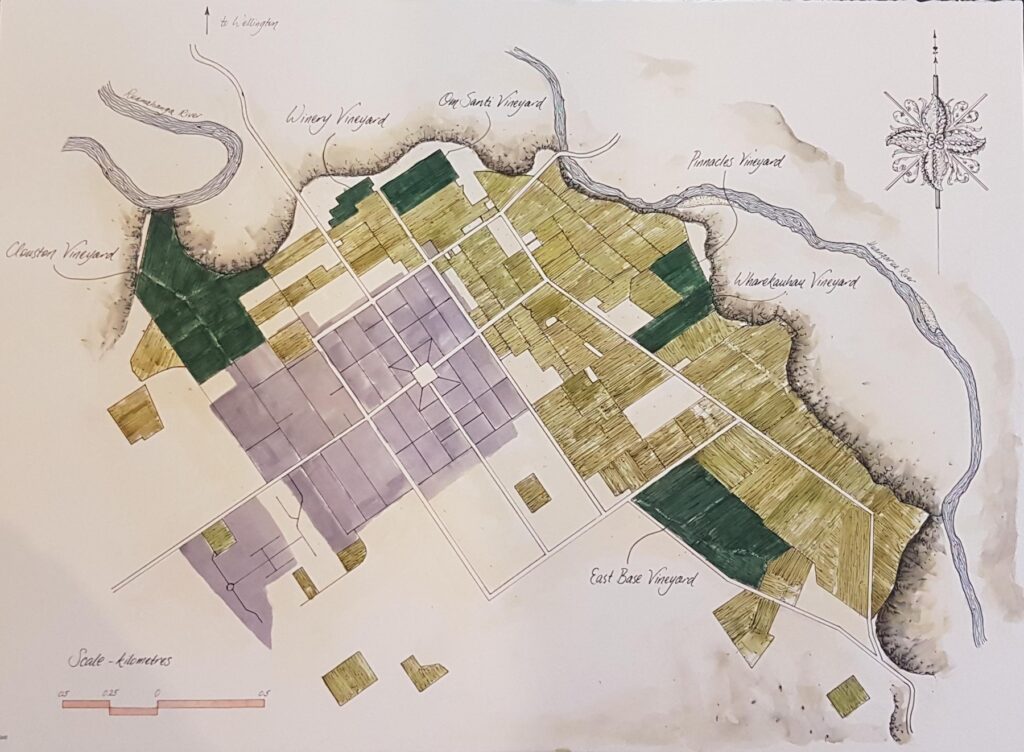
The Martinborough region is tiny – only 1% of New Zealand’s production, and the smallest wine-growing region in the country. It’s probably only New Zealand’s true ‘winemaking village’ where you can walk to a lot of the vineyards from the village square. It’s a stunning region to grow grapes and make wine, but it can also be a heartbreaker because the yields can be so low. This year may be a case in point because we have had cold, unsettled weather during flowering. I’ve just been looking at some bunches back in the vineyard and whether all the berries end up surviving through to harvest, it’s too early to tell but I think yields are going to low this year.What I love most about Palliser is working with a great team and being able to grow grapes, turn them into wine and then interface with the marketplace. Happy days!
WF: Interesting, because during lockdown I watched a Zoom presentation/seminar about New Zealand Food and Wine becoming the country’s next big tourism offering. My contribution was that I think we have great ‘ingredients’ but that we don’t necessarily turn those raw materials into something else that is world-class. I’d regard the one single thing that we grow here and is turned into something that is big on the world stage. are grapes into wine. And it says “New Zealand” on the label. Yes, New Zealand lamb is fantastic, but when it arrives on the table, it’s not labelled – our wine is, and it could also be labelled as “organic”.
GM: The growth in Martinborough just since COVID has been staggering, with people not travelling overseas. Rather than just as a lot of places in Martinborough do – just do the platters – we’re getting away from that and providing a menu, with choice. New Zealand cuisine, with wine.
We move on to tasting some wines – starting with the ‘2017 Griffin’ bubbles. The base wine is made on site and stored for 3 years; but is then sent down to No.1 Family Estate in Marlborough to be disgorged. Let’s face it – they know what they’re doing down there!
Guy had been on a trip to the UK two years ago, and spent part of the time afterwards working in a Champagne house in France, with the idea of seeing what they do over there and what is done at Palliser, and seeing if there was anything to be brought back to NZ.
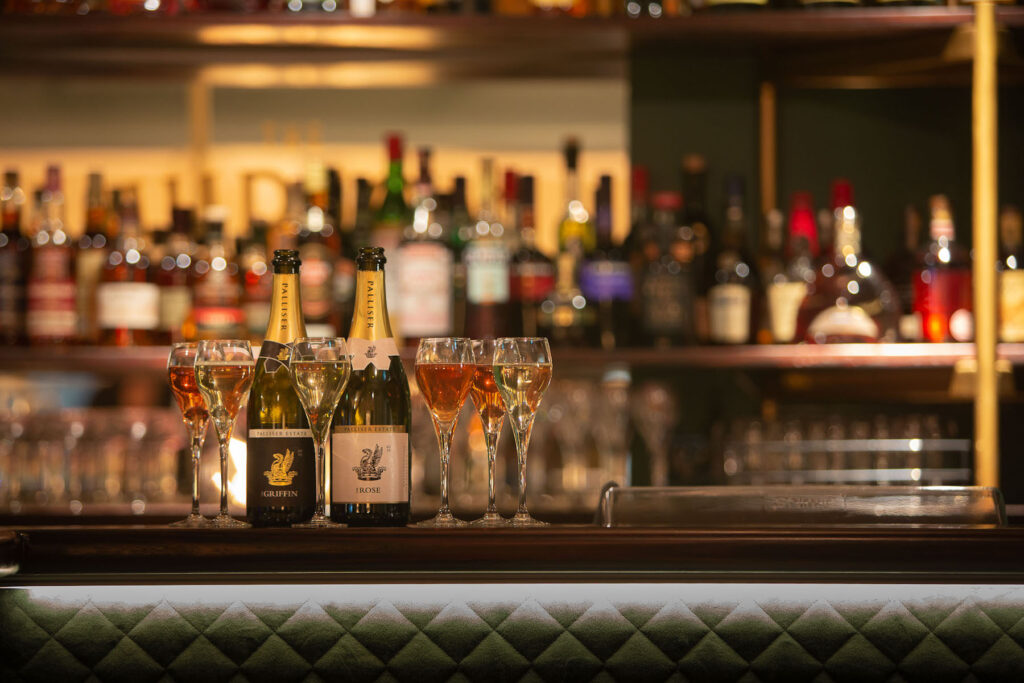
Guy adds: “the great thing about going to France was that I worked with a very talented winemaker called Chloe Chauvet. She set up the champagne side of Quartz Reef for Rudi and was with them for several years. She married a good friend of mine, so I managed to spend two weeks with them over vintage which was wonderful.”
In 2020 vintage changes have been made, and since great Chardonnay and Pinot Noir is being grown – it seems logical that a sparkling wine would be special too. New Zealand will make some great sparkling wines, but it’s in doubt if we’ll ever get to the level, or the perceived level, that Champagne is at.
GM: Palliser is one of the ‘Family of Twelve’ group – it’s a step to move on the perception of New Zealand being only Sauvignon Blanc and Pinot Noir. It was the brainchild of Richard Riddiford and Steve Smith and the idea was to have wineries right from the top to the bottom of both Islands, and travel as a collective giving people the opportunity to try other NZ wines, Chardonnay, Bordeaux blends, Rieslings… and educate the world that New Zealand was more than just Sauvignon Blanc and Pinot Noir. It’s been incredibly effective because you get to taste, as one example James Millton’s Chenin and it’s sublime, and people do discover New Zealand’s regions more intimately.
WF: It’s almost like New Zealand is a ‘fine wine country’ in the way that Bordeaux is a ‘fine wine region’.
GM: A lot of people are intimidated by fine wine, and by lots of descriptors for aromas and flavours. I say to people at tastings – that doesn’t matter – it comes down to whether you like it or not. One of the things I like about wine is it keeps you asking questions. You put your nose back in it and there’s a different smell, or there’s a new taste as it changes in your glass. When you get layers unfolding, over an evening – often I’ll open a bottle and have a couple of glasses, and leave it until the next night. And the difference between the first night and the second. The second night it’s evolved and changed and delivers on so many levels.
This is our 2019 Chardonnay, and what we’re doing differently now is we’re going directly from press to barrel, rather than settling into tank. And about 90% wild ferment, no sulphur additions pre-ferment. Just really trying to find a sense of place as much as we can, without mucking around with the wine. Grow really clean fruit, as good as you can possibly get it – bring it into the winery – handle it as gently as you possibly can…get it into barrel with the yeasts that had been in the vineyard, and let that do its work. Going directly into the barrel you pick up higher solids and that does give you the potential to be reductive, but I like what it does to the wine. It gives a nice line through the palate that I really enjoy.
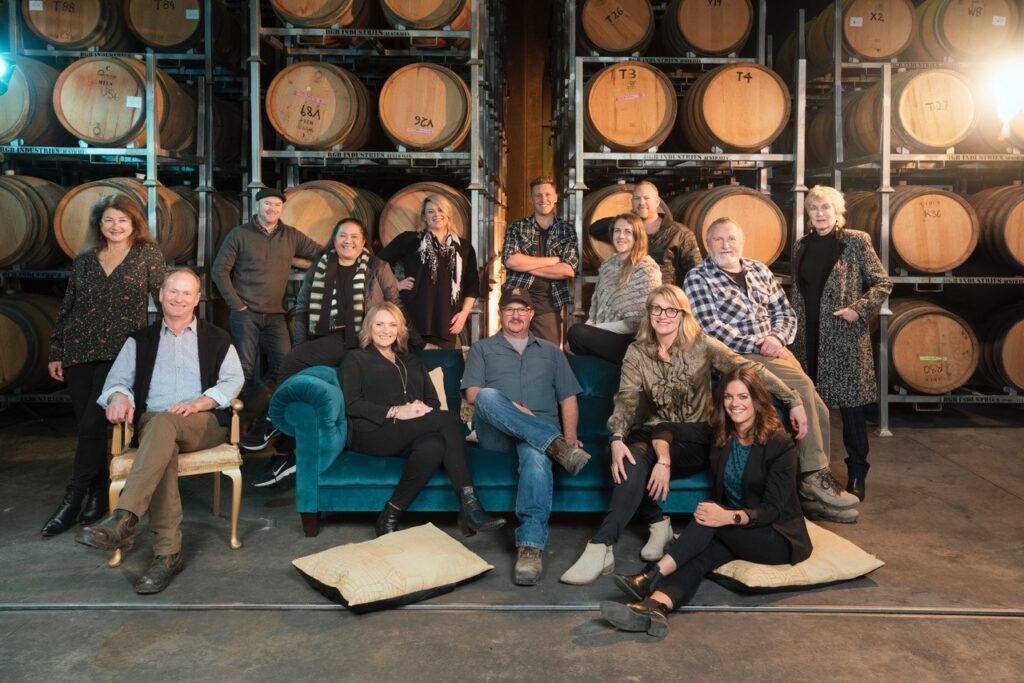
It’s the first wine under my watch and it’s just the beginning of the journey for us at Palliser. As we get to know the sites more and more we’ll narrow down the picking options, so that we can realise the potential of each vineyard. All our fruit is Estate grown and that’s a real luxury to be able to control the quality of your grapes coming in.
We move on to the Pinot – and briefly discuss the new single vineyard wines – one Chardonnay and one Pinot from the Wharekaukau vineyard that Palliser is now producing. The Chardonnay is already sold out, and the Pinot is just bottled.
GM: There’s about 15% whole bunch in the total blend and what we tend to find is we’ll do various individual components, and 50-60% is a nice number to have in a ferment, but the total blend once it’s all put together is where we’re sitting. We’re trying to walk down that elegant track. In Martinborough, if you want to, you have the ability to extract a lot of tannin and make big, incredibly structured styles of Pinot Noir. Which I think is what Martinborough was probably known for during the 90s and early 2000s, and slowly, as we’ve got older and lost more hair, we tend to find that if you leave them alone and don’t push them too hard, then you can move back towards a more elegant style of Pinot Noir.
WF: I always ask people what they think explains the difference, or progress in New Zealand wine over the last 15 years. And quite often I’ll get the answer – ‘vine age’… but I often counter that with the idea of ‘people age’ – our viticulturalists and winemakers have matured and in many cases are now at the top of their game?
GM: I look at the difference starting with Larry McKenna who offered me my first full-time role as Assistant Winemaker at Escarpment, and I look at how we made the Pinot Noirs then. We were extracting a lot of tannin, plunging them three times a day.
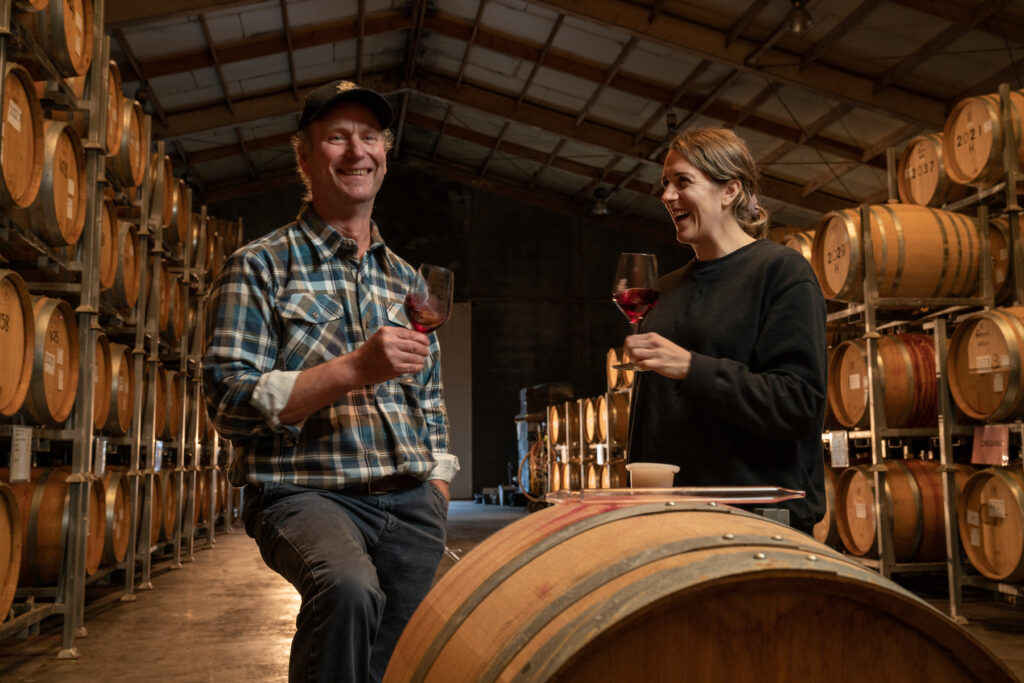
And certainly if you talk to Larry and most of the winemakers in Martinborough now, the winemaking has matured a lot and people are happier just to leave things alone. And I think the wines are getting better and better as a result. The next generation will pick up and carry on and the industry will be in good hands.
WF: Is there anything else that you would have liked to have done? Or still to come that you’ve got plans for?
GM: At Urlar we were organic and biodynamic, so here we are going down the organic track, and it’s like anything with change – it takes time. And it’s a philosophy that has to be embraced, and the staff here have done that. We’re now starting to bring some of the biodynamic practices in – like our own seaweed fertiliser – so we take it seriously and that’s our next step. But I find whenever you change a growing system, you not only need to give it time to let your staff adapt, but let the plants adapt too.
You need to give the vines a chance to find a new balance in life without chemicals. You can see it in them – the inter node spacing on a shoot. You only want a hand span between each shoot, and you see the vine finding that balance and being comfortable, then you can move to introducing biodynamics.
I couldn’t just be a viticulturalist or just a winemaker. To really be at one with your wines, you’ve got to really have your hands in the soil. Unless you understand the vines and find balance out there, you will never find balance in your wines. That’s why it’s such a wonderful job.
WF: And embracing vintage variation. Because it’s not like walking into a bar and having a Heineken that tastes the same every day of every year. I’m not sure that the consumer gets the idea that it’s different every year. Maybe they understand the idea of “a good year”.
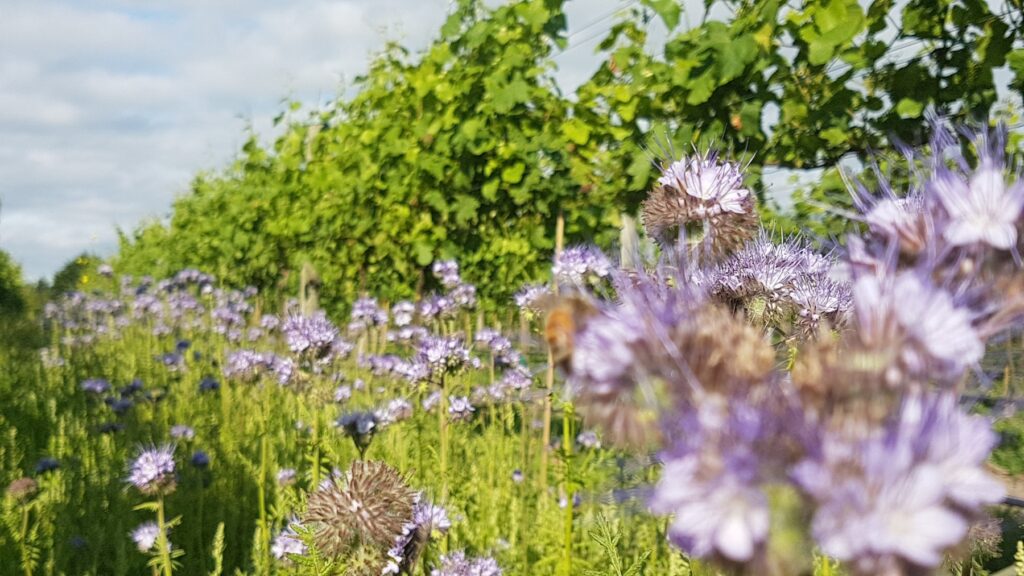
GM: Often people will say ‘a good year’ but if you’re smart enough about your viticulture, in a cool year you’ll drop fruit to the ground so you can ripen what you’ve got. And I often think in a cool year you get the best wines, because it allows you to retain more natural acid. Our single vineyard wines will show vintage variation well. If you opened a line-up over 5 years, then it will very clearly explain the difference in every season. In a cool year we get more red fruits, and I think probably the one area that New Zealand winemakers are guilty of is picking slightly over ripe. That’s another step in our learning curve. We’ve got to have the courage to pick a little earlier.
WF: Is there a moment in the year that’s your ‘Aha’ moment?
GM: I have a couple of moments that are really special. One is pruning time. When you actually get to prune a vineyard and you lay the canes on the wire and look at what you’re setting up for the next year. I find that incredibly exciting. When you see lovely balance in the inter node spacing on the canes, that lets you know that the previous year the pruners had done a great job.
WF: can I just say that you’re the first person who has said that – ‘the inter node spacing’! (laughs) Brilliant.
GM: And through the growing season – flowering is I think an incredibly exciting time. You get to smell the flowers and you know it’s about to happen, and you know you’re about to get your crop that’s going to decide what the year will be ahead.
Just after ferment, particularly with the Pinot Noir, tasting them every day and deciding when we’re going to press off. We generally do it before we have coffee at about ten in the morning, and we include all the interns and all taste at the same time every day. And it’s really interesting to see the tannins moulding into the wine. The first five days are really disjointed but then you see the wine coming together in days 6 to 9, and you’re deciding when to press off, because at that point you’re ending the wines life in the fermenter.
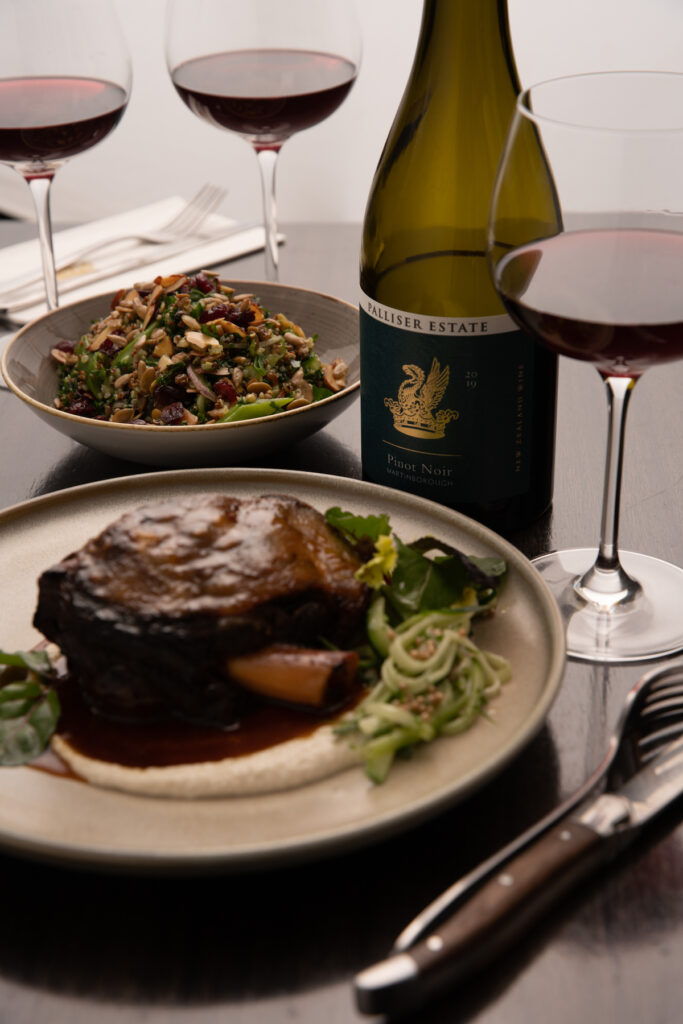
It’s like taking a child away from its mother. You ask everyone ‘is it better than yesterday?’ I find that a thrilling time. And you always second guess yourself – did I get it right?
WF: And you only get one chance a year.
GM: The bottom line is, that the wine is only as good as the ingredients you start with. You’ve got to grow good fruit. And you can use a fancy egg, or whatever to ferment in, but if the fruit’s not good going in, what comes out won’t be great either.

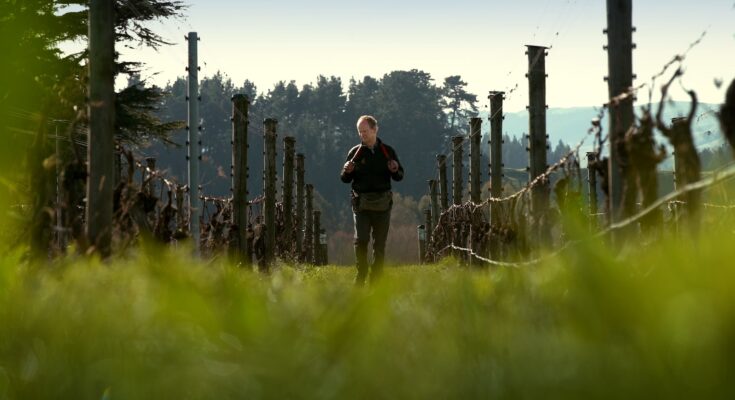
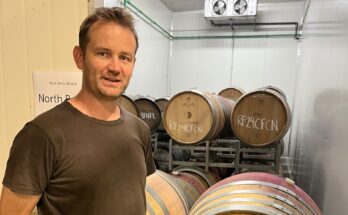


Great to see somewhere like Palliser moving ahead – organics and single vineyard wines. Got to love Martinborough Pinot!
Thanks Deb, Got to agree..